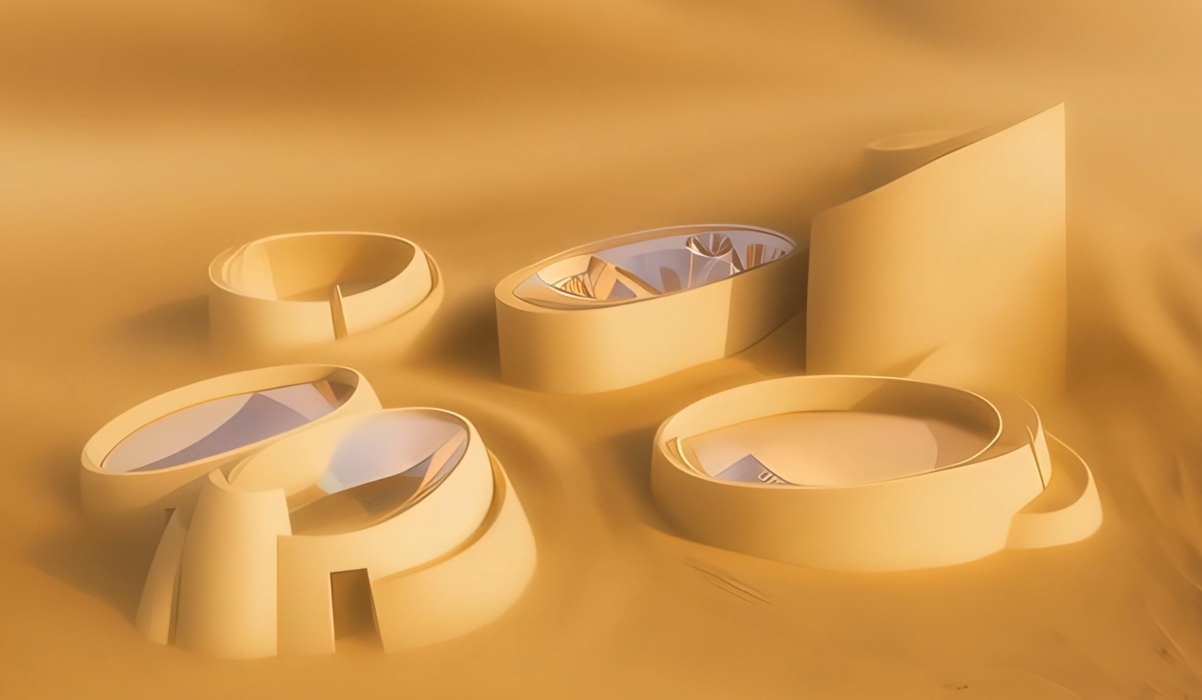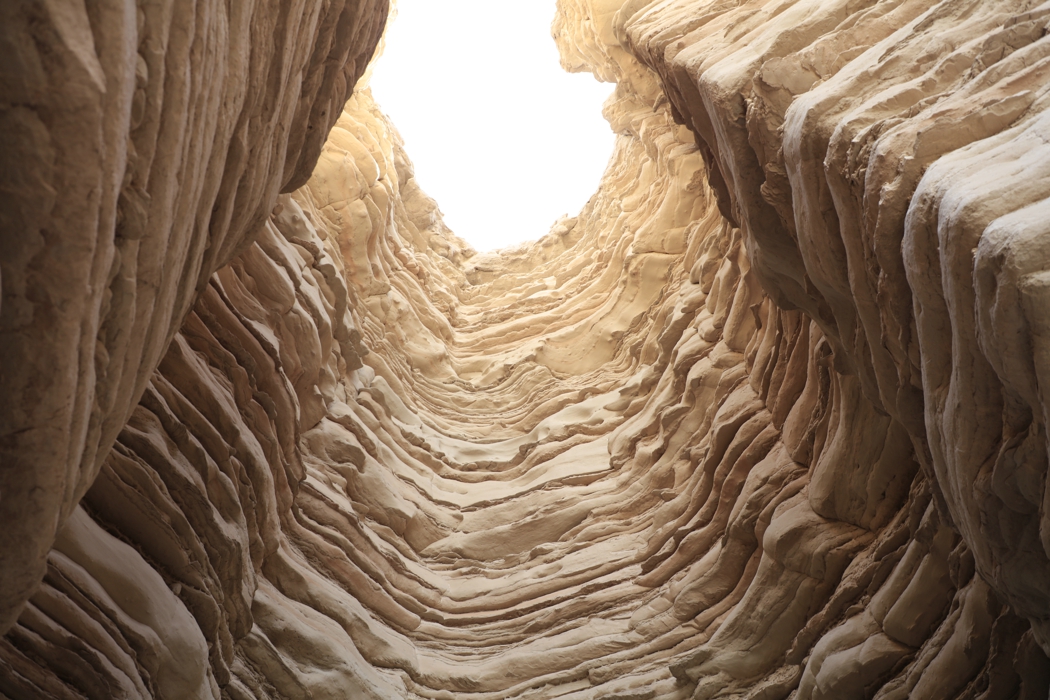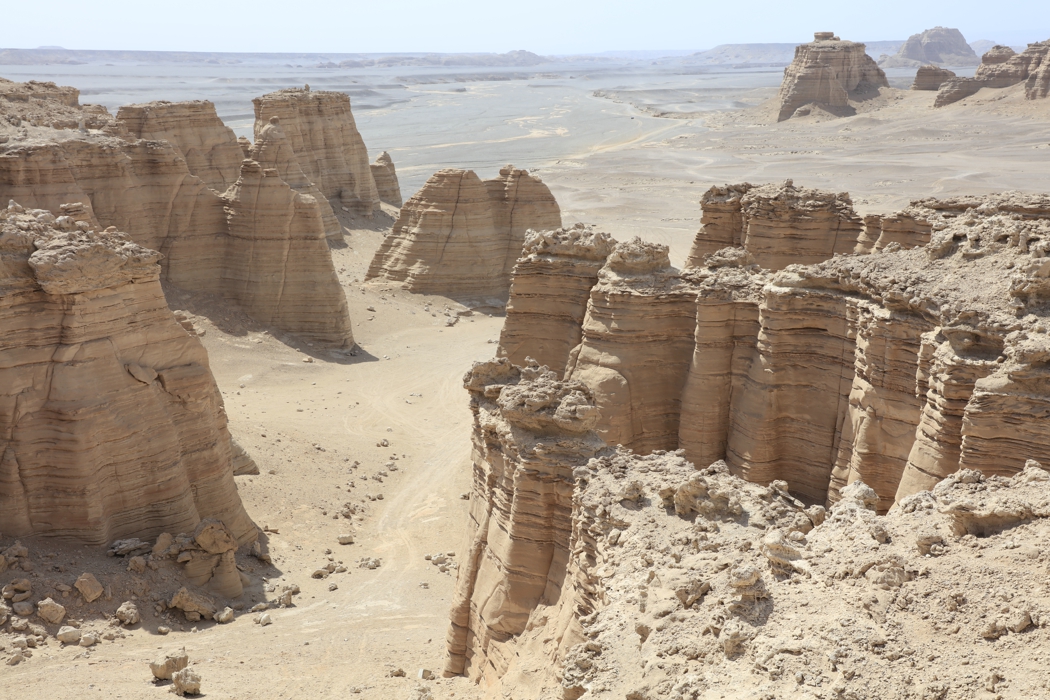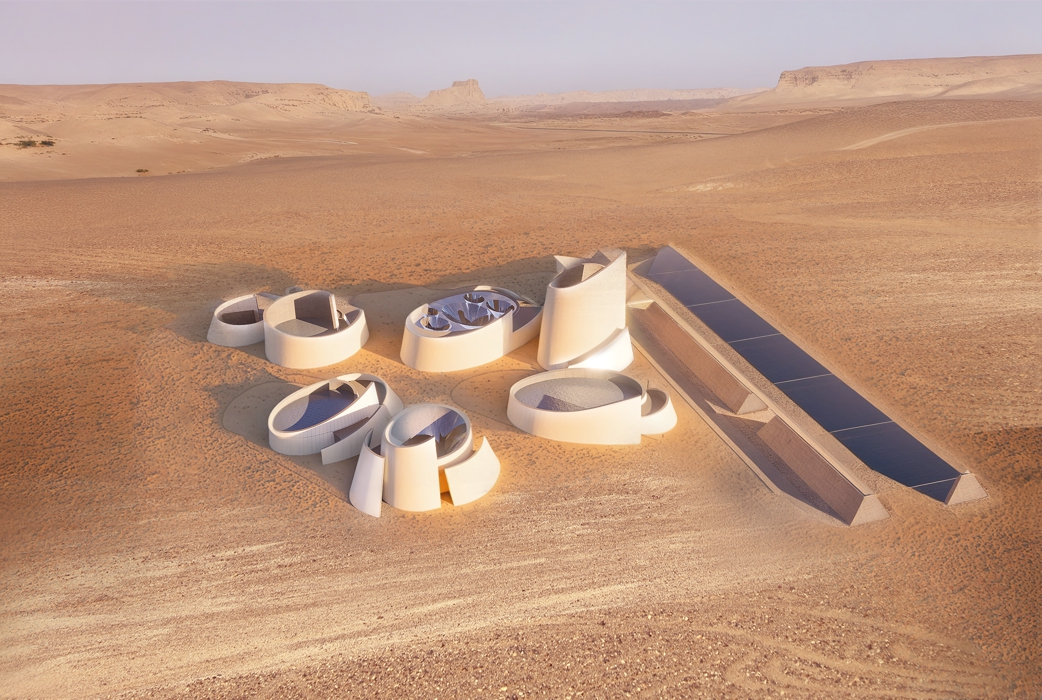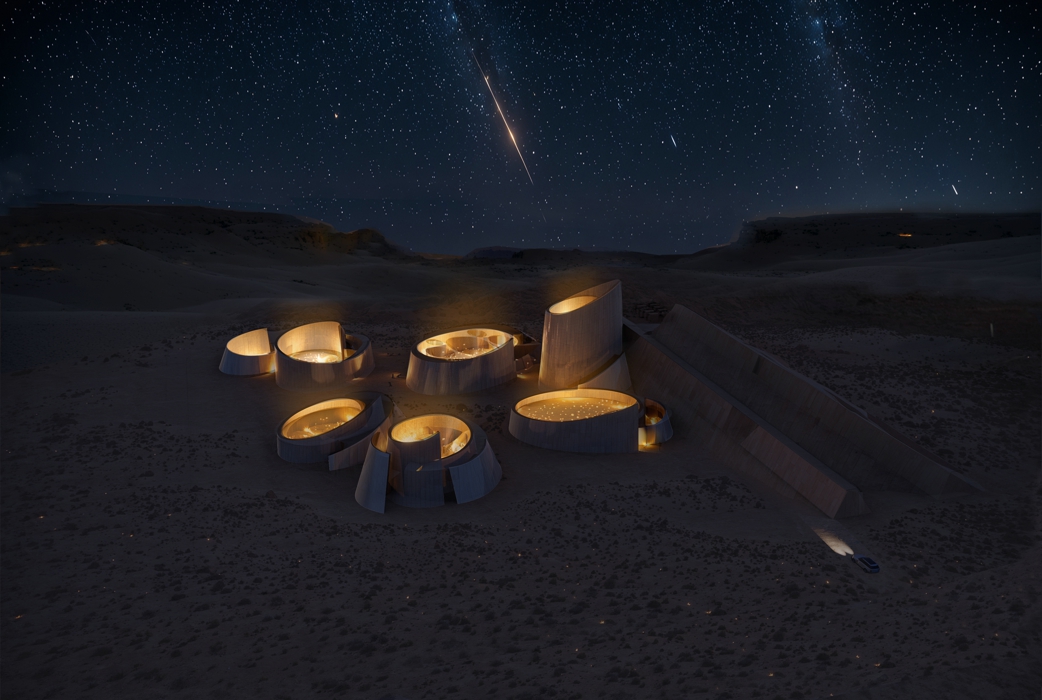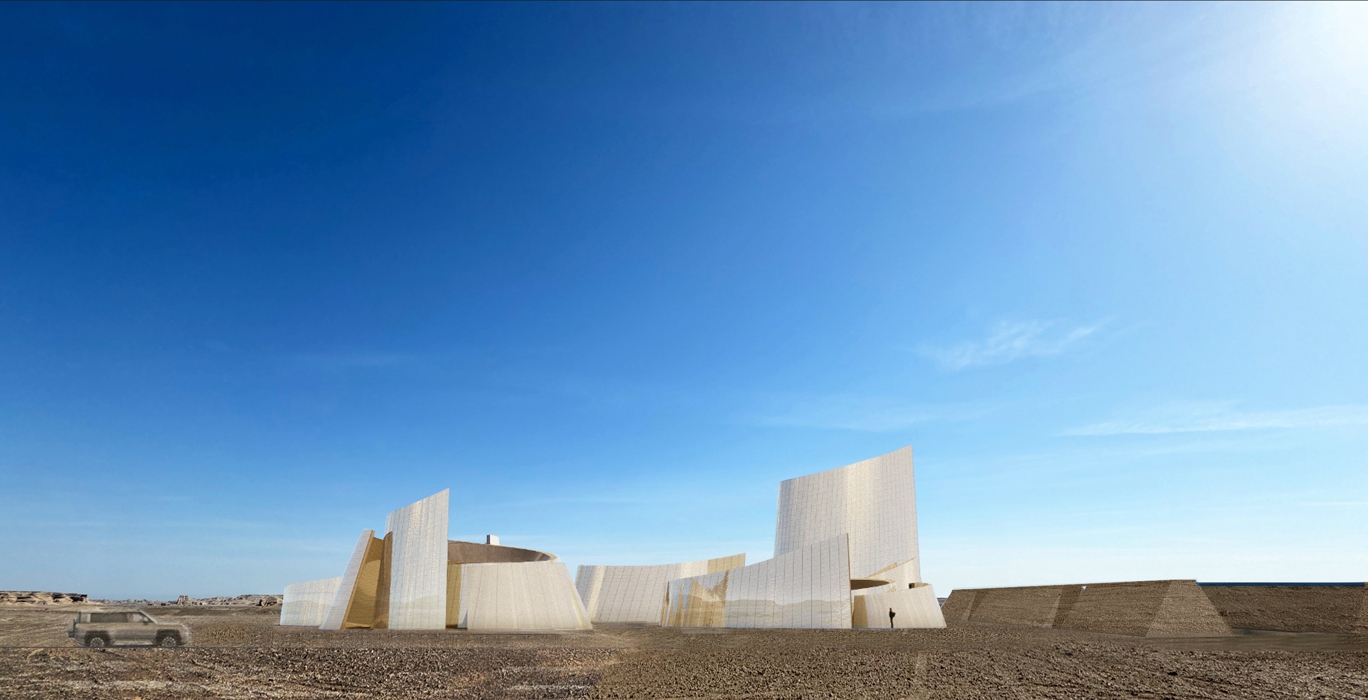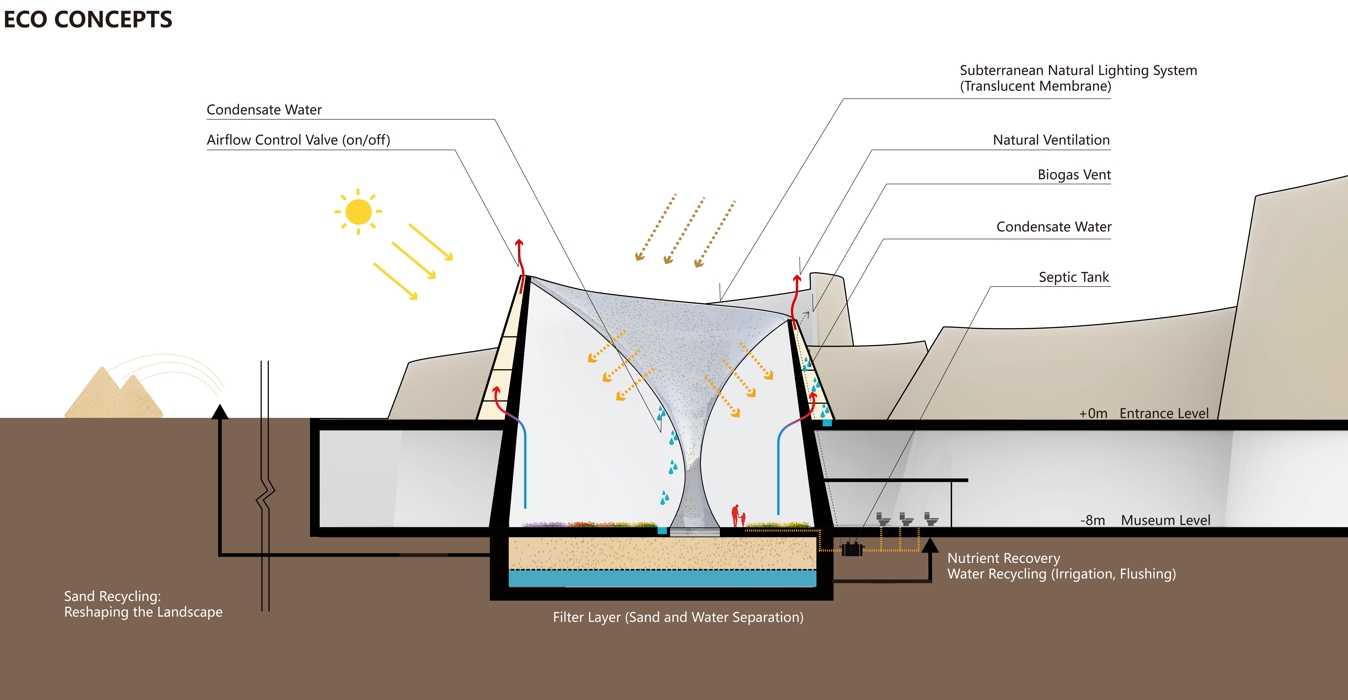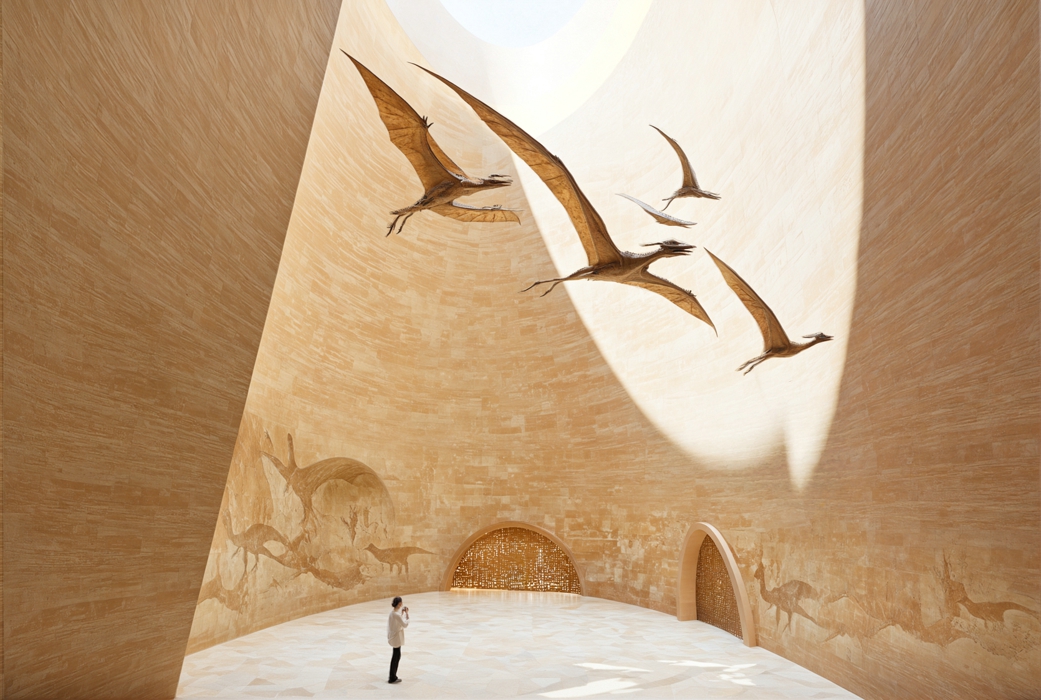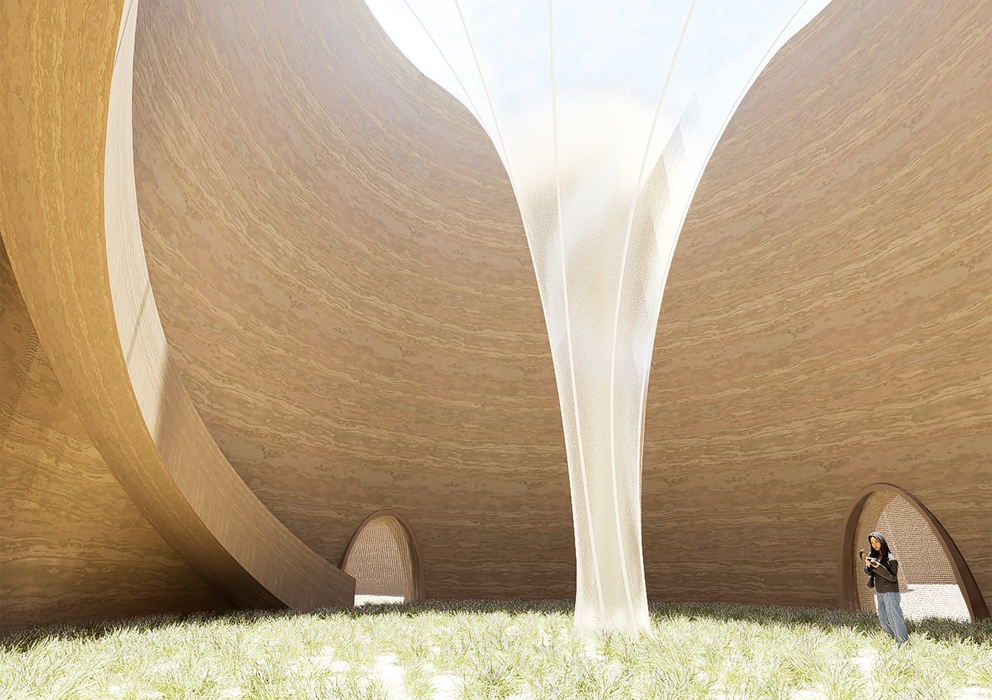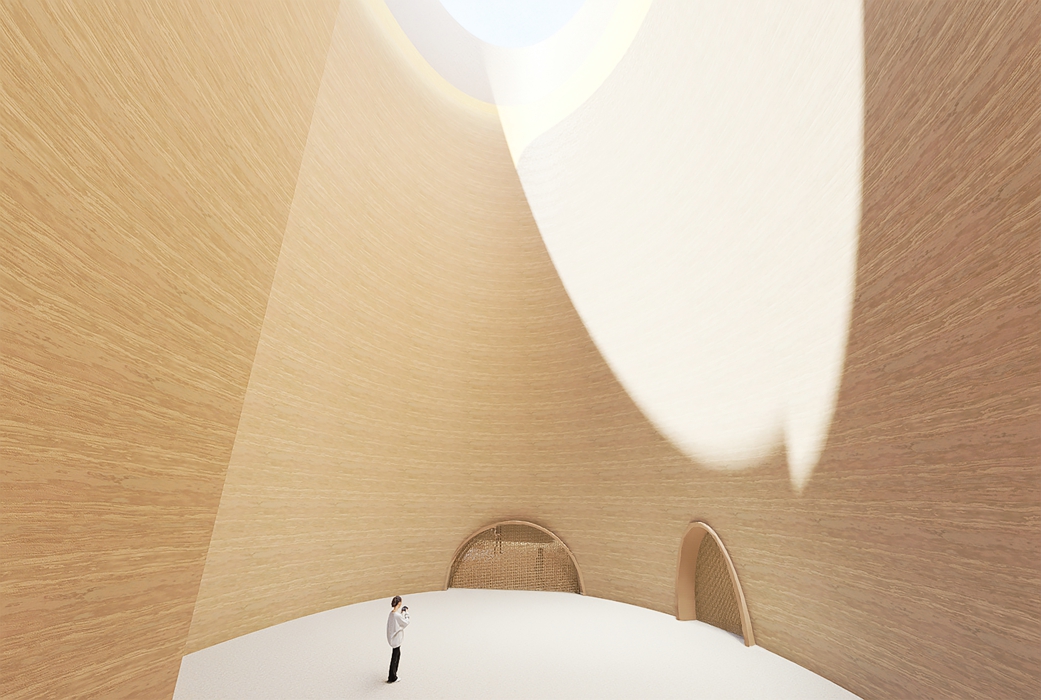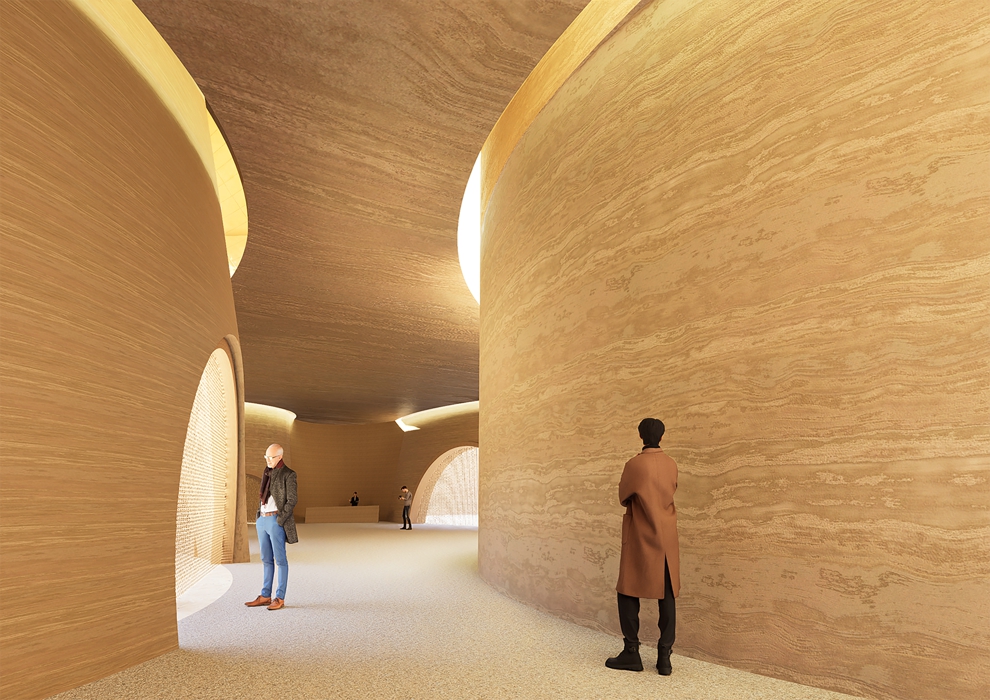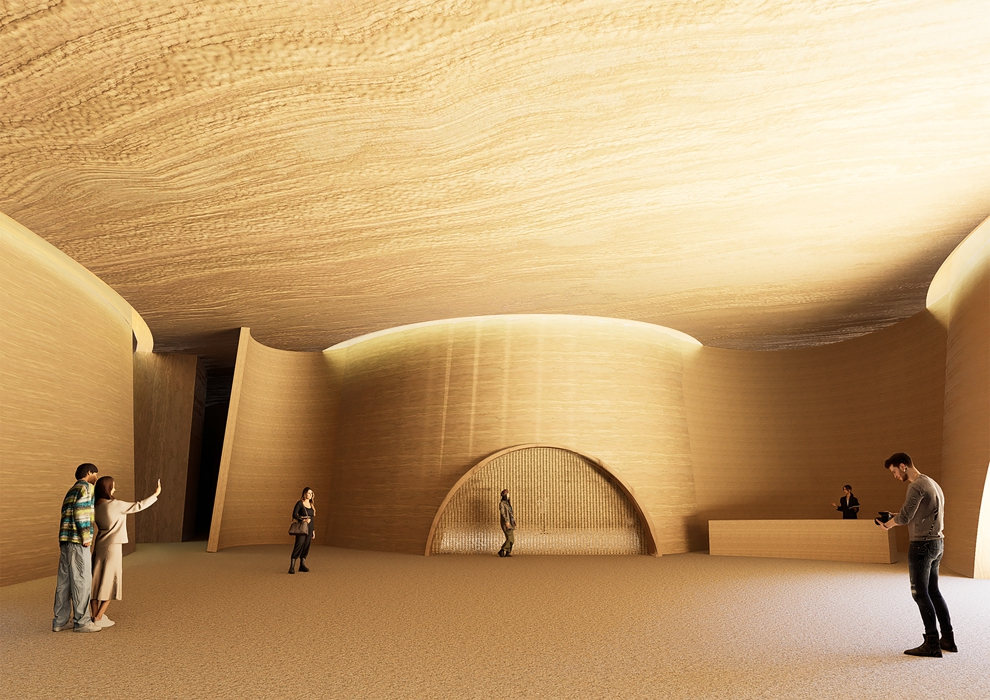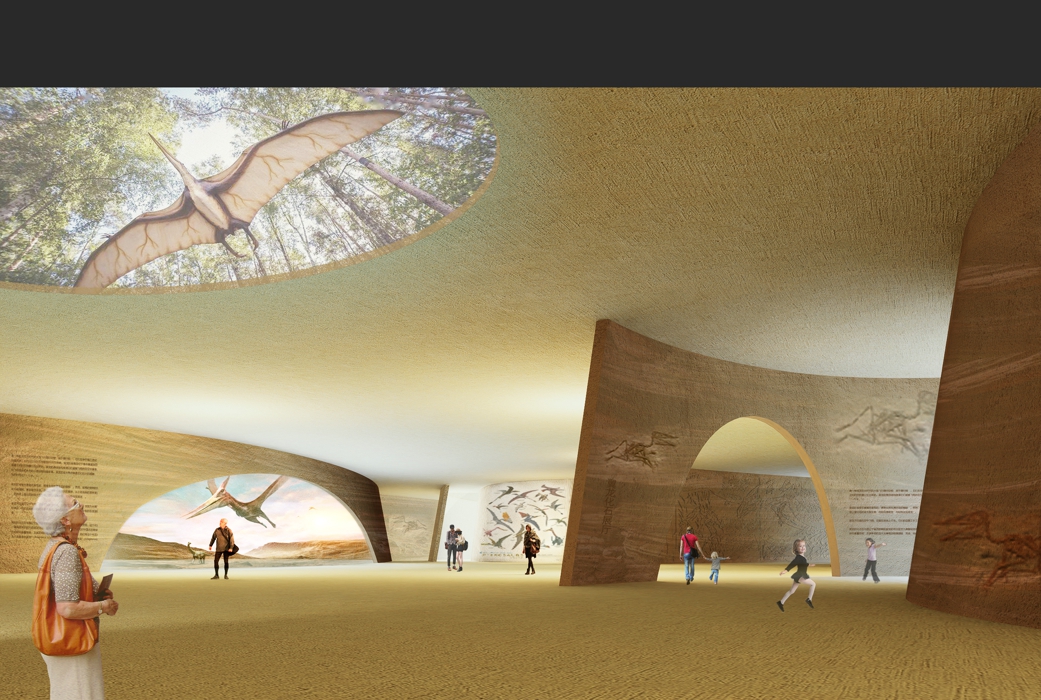Hami Pterosaur Museum: Eco-Adaptive Design in Extreme Conditions
Project Information
- Project Location:
- China Hami, Xinjiang
- Project Scale:
- 14000㎡
- Design Time:
- 2023
- Build Time:
- December 2025
- Client:
- Hami City Forestry and Grassland Bureau
Project Profile
1. Project Statement
In the heart of Hami’s International Exploration Park, amid the world’s most distinctive Yardang landforms, the Hami Pterosaur Museum emerges as an architectural response to one of the planet’s harshest environments. This unique site, rich in fossilized pterosaur remains, experiences annual precipitation of just 30–50 mm, violent sand-laden winds up to Beaufort scale 13, temperature extremes from –22°C to 46°C, and intense solar radiation pushing surface temperatures to 70°C.
2. Objective and Challenge
Hami’s arid continental climate poses several challenges:
- Extreme dryness: Annual precipitation of 30-50 mm, relative humidity below 40%.
- Severe winds and sandstorms: Frequent northeast winds, reaching 13 Beaufort scale (violent storm).
- Drastic temperature variations: Summer highs reach 46°C, winter lows drop to -22°C.
- Intense solar radiation: Surface temperatures reach 70°C.
3. Design Strategy
The museum’s eco-adaptive design integrates scientific research, education, and eco-tourism while pioneering strategies for climate resilience in arid zones. Embedded underground, the main exhibition spaces maintain stable temperatures and avoid sandstorm abrasion. Above ground, spiraled shell-like structures—evocative of fossilized dinosaur eggs—anchor the site visually and aerodynamically, deflecting winds and channeling airflow to reduce pressure by 40%.
Light tubes draw daylight deep into the interior, cutting artificial lighting use by 48.8% and saving 84,672 kWh annually. Hourglass-shaped translucent membranes recycle drifting sand for landscape restoration. A passive evaporative cooling system leverages the arid climate to slash air-conditioning energy by 94%, while greywater recycling and anaerobic digestion sustain drought-tolerant planting and enrich the soil. Photovoltaic panels mounted on parking structures generate 500,000 kWh of clean energy per year, bringing total carbon savings to 900–1,000 tons CO₂e annually.
4. Conclusion
Through its integration of bio-inspired form, underground insulation, renewable energy, and circular resource flows, the Hami Pterosaur Museum redefines sustainable architecture in extreme conditions—setting a precedent for low-carbon, eco-adaptive design in arid landscapes.

